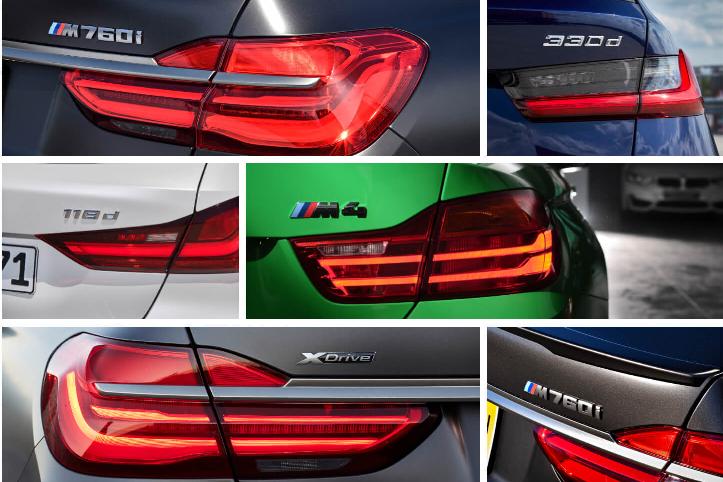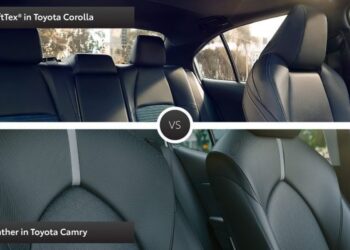BMW numbers can seem confusing at first. They hold specific meanings tied to car models.
Understanding these numbers helps identify the car’s series, engine type, and other features. This guide will decode the mystery of BMW’s numbering system. BMW uses a unique system to name its cars. Each number tells a story. It reveals the model series, engine size, and body style.
For example, the first digit often indicates the series. The next two digits might suggest the engine capacity or model. Letters can signify special features like “x” for all-wheel drive. Knowing these details can help when buying a BMW. It ensures you choose the right model for your needs. Dive into this guide to learn what each number and letter means.
Bmw Model Numbering System
The BMW Model Numbering System is a fascinating aspect of the brand that many car enthusiasts find intriguing. It’s more than just a way to identify different models; it tells a story of the car’s characteristics and capabilities. If you’ve ever wondered why BMW uses numbers like 320i or X5, you’re not alone. Understanding this system can enhance your appreciation of these iconic vehicles.
History And Evolution
BMW’s numbering system has evolved significantly over the years. Originally, the numbers were straightforward, reflecting engine size and model series. As technology advanced, the system adapted to include additional information like performance features and design elements.
Consider the classic BMW 2002 from the 1970s. The ‘2002’ indicated a 2-liter engine. Fast forward to today, and the model numbers incorporate more than just engine specs. This evolution shows how BMW’s approach has become more sophisticated, mirroring advancements in automotive engineering.
Basic Structure Explained
The BMW model numbering system is structured to provide key information at a glance. Typically, the first digit indicates the series, such as 3 Series or 5 Series. The following two digits often represent the engine size or power level.
Take the BMW 330i, for example. The ‘3’ signifies the 3 Series, while the ’30’ hints at the engine’s performance level. Letters like ‘i’ or ‘d’ may follow, showing fuel type or specific features. This system is a concise way to communicate the car’s essence.
Now, think about how this numbering might influence your car choice. When shopping for a BMW, knowing what the numbers mean can guide you to the right model for your needs. Do you prefer the sporty flair of a 4 Series or the luxurious comfort of a 7 Series?
So, next time you see a BMW on the road, pay attention to those numbers. They’re not just digits; they’re a code that unlocks the car’s personality and performance. How might this understanding change your view of these vehicles?
Credit: www.tiktok.com
Understanding Series Numbers
Bavarian Motor Works, commonly known as BMW, uses a numbering system to identify their cars. Each number reflects a specific series, helping buyers understand the vehicle’s characteristics. Whether you’re a car enthusiast or a potential buyer, grasping these numbers can enhance your knowledge.
1 Series To 8 Series
The 1 Series represents BMW’s entry-level cars. These vehicles are compact and ideal for urban driving. Moving up, the 2 Series offers more power and style options. It often includes coupes and convertibles. The 3 Series stands for versatility. Known for luxury and performance, it’s a popular choice among professionals.
The 4 Series emphasizes sporty design. It includes models with dynamic features and sleek lines. The 5 Series provides a balance of luxury and technology. It’s ideal for executive-level comfort on long drives. The 6 Series, though less common now, focuses on high-end performance and elegance.
The 7 Series is BMW’s flagship luxury sedan. It offers advanced technology and supreme comfort. Lastly, the 8 Series showcases luxury sports cars. These models combine high performance with sophisticated design.
Specialty Series
BMW also offers specialty series like the X and Z models. The X Series includes SUVs and crossovers. They provide versatility for family and adventure. Z Series cars are roadsters, focusing on open-air driving pleasure. Lastly, the M Series signifies BMW’s high-performance models. These vehicles are engineered for speed and agility.
Decoding The First Digit
The allure of BMW lies in its performance and design. But understanding their numbering can be confusing. Each BMW model number tells a story. The first digit plays a crucial role. It gives insight into the car’s identity. This number is not random. It holds a specific meaning. Let’s explore what it reveals.
What It Represents
The first digit of a BMW model number indicates the vehicle series. It sets the stage for the car’s size and class. For instance, a ‘3’ suggests a compact executive car. Meanwhile, a ‘7’ indicates a luxury sedan. This digit helps identify the car’s position within BMW’s lineup. It provides a quick reference for potential buyers. Knowing this digit simplifies the buying decision.
Impact On Vehicle Class
This first digit impacts the vehicle’s class and features. A lower number often suggests a smaller, more agile car. Higher numbers hint at luxury and advanced technology. For example, the BMW 1 Series is compact and efficient. The 7 Series offers premium comfort and features. The digit helps set expectations for performance and amenities. Understanding this can guide your choice in selecting a BMW.

Credit: www.bimmer-tech.net
Exploring The Second And Third Digits
BMW numbers hold key information about the vehicle’s model and engine. The second digit typically indicates the model series, while the third digit often represents the engine size or power. Understanding these numbers helps in identifying the car’s specifications easily.
Understanding the numbers in a BMW model can feel like deciphering a secret code. But once you get a hang of it, it’s like having a mini cheat sheet for your car’s features. The second and third digits in a BMW model number are particularly intriguing. They can reveal a lot about the vehicle’s engine size and power, as well as some unique variations and exceptions. Let’s dive into these numbers and see what they really mean.
Engine Size Or Power
The second and third digits traditionally indicate the engine size in liters. For instance, a BMW 330i suggests a 3.0-liter engine. However, in recent models, this correlation has become less strict. Sometimes these numbers represent the engine’s power output instead. It’s a reflection of the car’s performance capabilities. So, whether you’re looking at a 318i or a 530d, those digits are your hint to what lies under the hood.
Have you ever wondered why your BMW model’s numbers might not match the actual engine size? This shift towards indicating power rather than just size can offer more clarity on performance. Next time you see a BMW, try guessing its power just from the numbers—it’s a fun challenge!
Variations And Exceptions
BMW also throws some curveballs with variations and exceptions. Not all models strictly follow the engine size or power rule. For example, the BMW 128i doesn’t have a 2.8-liter engine. These exceptions usually arise due to marketing decisions or historical significance tied to specific numbers.
Do these exceptions confuse you? They might at first glance, but they can also give a model unique character. Knowing these quirks can even make you feel like an insider. You might even impress fellow car enthusiasts with your knowledge of these exceptions.
Understanding these digits can enhance your appreciation of BMWs. It’s not just about the numbers; it’s about the story behind them. What do you think your BMW’s numbers say about its personality?
Letter Designations
Beneath the sleek exterior of a BMW, lie its unique identifiers. The letter designations in BMW models tell important details. They hint at performance, features, and the car’s purpose. Understanding these letters can help buyers make informed choices.
Common Letters Used
Common letters in BMW models include “M,” “X,” and “i.” The “M” stands for Motorsport. It indicates a high-performance version. The “X” signifies a Sports Activity Vehicle, or SUV. The “i” refers to fuel injection, a common feature in modern cars.
Performance And Features
The letter “M” highlights enhanced performance features. These may include sportier suspensions and powerful engines. The “i” in a BMW indicates advanced technology features. It often involves efficient fuel systems. The “X” series offers all-wheel drive for rough terrain. Each letter reveals a different aspect of the car’s capabilities.

Credit: www.youtube.com
Special Editions And Variants
The world of BMW is filled with models that appeal to different tastes and preferences. Among these are special editions and variants that offer unique features or enhanced performance. These models provide an exciting twist to the standard lineup, often reflecting BMW’s commitment to innovation and excellence. Whether you’re a fan of high-performance sports cars or cutting-edge electric vehicles, there’s likely a special edition that catches your eye.
M Models
BMW’s M models are synonymous with performance and power. These are the cars that make you feel alive when you hit the accelerator. Take the M3 or the M5, for instance. They offer not just speed but also precision handling, making every drive an experience to remember. You might have heard a friend rave about their M3’s cornering abilities or the sheer thrill of driving it on a winding road. Do you think you could resist the allure of such a driving experience?
BMW’s M division takes standard models and transforms them into beasts on the road. The enhancements are not just about horsepower. It’s about creating a balance between speed, agility, and elegance. If you’ve ever wondered why someone would choose an M model over a standard BMW, it’s all about the adrenaline rush and the joy of driving.
I Series And Electric Variants
BMW’s i Series represents the future of driving. These models are eco-friendly without sacrificing the luxury and performance BMW is known for. Take the i8, which is a plug-in hybrid sports car that combines electric power with a turbocharged engine. Imagine driving a car that not only looks like it’s from a sci-fi movie but also contributes to a greener planet. Wouldn’t that be a conversation starter at your next dinner party?
The electric variants of BMW, like the i3, showcase the brand’s commitment to sustainability. These models are perfect for city driving and offer an impressive range on a single charge. The electric BMWs are not just about reducing emissions; they’re about changing the way you think about driving. How often do you get a chance to lead the charge in both style and sustainability?
Special editions and variants are where BMW shines brightest, offering unique options for discerning drivers. Whether you’re drawn to the high-octane thrill of M models or the forward-thinking innovation of electric variants, BMW ensures there’s something for everyone. Which special edition would you choose to make your mark on the road?
Regional Differences
BMW numbers often confuse many car enthusiasts worldwide. The numbers on BMW cars usually indicate the model and engine type. But, these numbers can have different meanings in various regions. Let’s explore the differences.
European Vs. North American Models
In Europe, BMW models often focus on engine size and type. Numbers like 320i or 530d are common. The first digit often indicates the series. The next two digits usually show engine size. The letter at the end tells the fuel type. Petrol or diesel.
North American BMW models sometimes differ slightly. Here, the focus is more on model and features. The number may not always match the exact engine size. It often reflects the car’s position in the lineup. A 330i might not be a 3.0-liter engine.
Market-specific Features
BMW cars often have features tailored to different markets. In Europe, fuel efficiency is crucial. Small engines and diesel options are popular. Safety regulations also vary. This affects design and features offered.
In North America, comfort and technology are key. Larger engines are more common. The focus is on luxury and performance. Market preferences shape the car’s design and options.
Understanding these regional differences helps when choosing a BMW. Each region has unique preferences and regulations. This impacts how BMW numbers and features are presented.
Future Of Bmw Numbering
The future of BMW’s numbering system intrigues enthusiasts and car buyers alike. BMW has a legacy of innovation and change. The naming system plays a key role. It helps identify and differentiate models. As the automotive landscape evolves, so does BMW’s approach. This includes adapting to new trends and technologies. The iconic numbering system might see significant shifts.
Trends In Model Naming
BMW’s model naming follows a clear pattern. Traditionally, numbers indicate series and engine size. But trends influence these conventions. Compact models and SUVs have increased. This leads to more diverse naming options. BMW might integrate more descriptive elements. Names could reflect design or technology features. This aligns with consumer preferences for clarity and uniqueness.
Impact Of Electric Vehicles
Electric vehicles are reshaping BMW’s lineup. The traditional engine size indicator becomes less relevant. Instead, electric range and power take precedence. BMW’s i Series already reflects this change. Future models might use different naming schemes. They could highlight electric capabilities. This shift would help consumers identify eco-friendly choices. BMW might introduce new letters or numbers for electric models.
Frequently Asked Questions
What Do The Bmw Model Numbers Mean?
BMW model numbers indicate the series, engine size, and often the body style. The first digit represents the series, while the next two digits usually show engine displacement in deciliters. Letters like ‘i’ for fuel injection or ‘x’ for all-wheel drive provide additional information.
What Does 328 Mean In Bmw?
The “328” in BMW signifies the model’s engine size and performance. “3” represents the series, “28” indicates the engine’s power level. This naming convention helps identify specific car models within BMW’s lineup, ensuring easier recognition of engine capacity and performance characteristics.
What Does 330i Mean In Bmw?
The “330i” in BMW refers to the 3 Series model with a 3. 0-liter inline-six engine. The “i” indicates it’s a fuel-injected petrol engine. This model balances performance, efficiency, and luxury, making it popular among enthusiasts. BMW’s 3 Series vehicles are known for their sporty driving dynamics and refined design.
What Does 520 Mean In Bmw?
The number “520” in a BMW model signifies the engine type and size. “5” denotes the series, while “20” indicates a 2. 0-liter engine. This naming convention helps identify performance and specifications of BMW vehicles.
What Do Bmw Series Numbers Represent?
BMW series numbers represent vehicle size and type. Higher numbers indicate larger, more luxurious models.
Conclusion
BMW numbers reveal much about the car’s design. They indicate the series and engine capacity. Understanding these numbers helps in choosing the right model. It’s simple once you know the pattern. Each series has unique features. These numbers assist in distinguishing between models.
Buyers can make informed decisions. Knowing the meaning saves time. It also enhances your buying experience. Next time, look closely at those numbers. They tell a story. This knowledge is practical for enthusiasts and buyers alike. Keep exploring the fascinating world of BMW.
It’s more than just numbers!

















